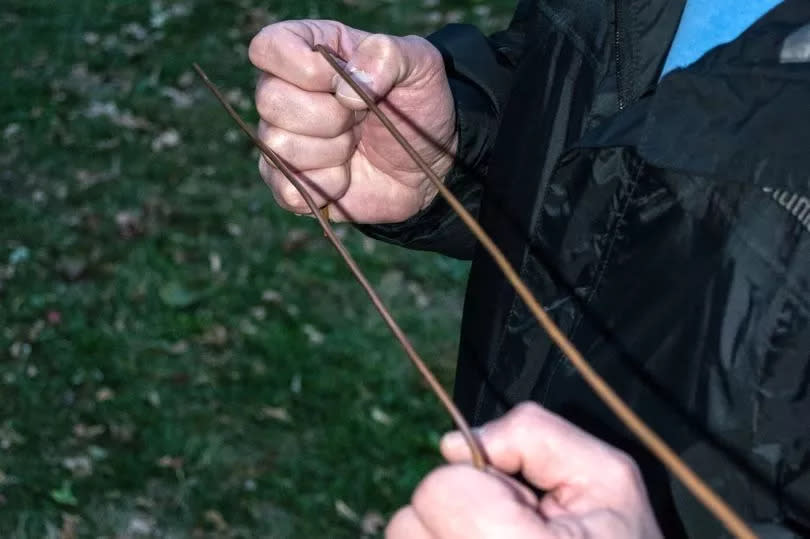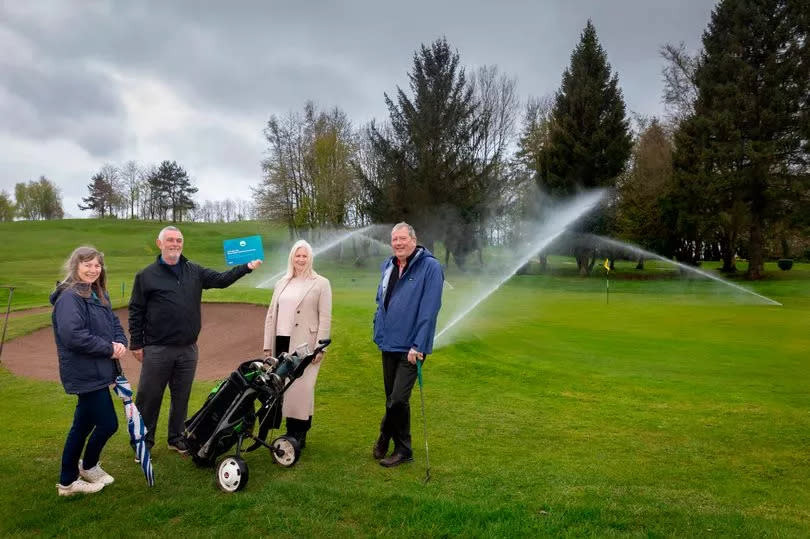Master dowser divines water 300ft deep to protect scenic North Wales site from drought

One of the world’s top water dowsers was brought in to help a Denbighshire golf course cut its utility bills. Peter Taylor, 83, from Mold, Flintshire, used his divining sticks and a pendulum to pinpoint water more than 300ft below ground.
Since 1989, he’s been using his divination powers to look for water, rare stones, precious metals and even shipwrecks. The technique is centuries old and Mr Taylor claims to have hit the bullseye nearly every time.
He’s found water sources for caravan parks in North Wales and located a long-running water leak at a Powys school. His latest challenge came when Ruthin-Pwllglas Golf Club, near Efenechtyd, wanted to establish its own borehole.
READ MORE: Llandudno Victorian Extravaganza organiser explains why event makes him 'die a little more inside'
READ MORE: Mold: Fire service issues update on Synthite blaze as one taken to hospital
The club dates back to 1905 but 350m years ago the land on which it stands – 650ft above the Vale of Clwyd – was the bed of a warm tropical sea populated by the ancestors of todays shellfish, sharks and rays. Sediment laid down by that Caribbean-style sea became limestone rock and water that filters through it is now being pumped up to the golf course.
Club chairman Ian Vaughan Evans said the new borehole will ensure the course stays green even in a drought. “Because of climate change we wanted to save ourselves money by going greener and this is the latest step in that process,” he said.
“The borehole will pay for itself in four years. It is part of our plan to make the club more self-sufficient by reducing recurring bills such as water and electricity to keep membership fees at an affordable level.
“We already have solar panels on the greenkeeper’s shed and we are looking to use them to charge electric-powered maintenance equipment. Installing more solar panels is our next project which we expect to do this year.” The North Wales Live Whatsapp community for top stories and breaking news is live now - here’s how to sign up

Helping towards the scheme’s £14,000 cost was a £10,000 grant from the Clocaenog Forest Wind Farm Fund. The borehole was drilled by the Frankie Hay, of the ANTS Group, and installed by Shaun Cummings, of Cummings Borehole Services.
Shaun’s first step was to hire Peter Taylor, a master dowser, to find the best place to drill for water. Over the past three decades his dowsing skills have been in demand around the world – he claims to have once located a water source in the middle of the desert.
Although there is no scientific evidence to prove that dowsing works, 10 of the UK’s 12 water companies were still using the technique to find leaks as recently as 2017. Mr Taylor starts by holding a pendulum over a map to roughly locate a water source.
Traditionally he used paper maps but in recent years he’s begun using Google Maps on a computer screen. Once a location has been identified, to within 20ft-30ft, he visits the site with his divination rods to pinpoint the exact spot.
Shaun said a hole – just six inches wide – was then drilled down 104 metres. He added: “The casing I inserted for the pumping equipment is only four inches wide but it’s capable of pumping up to 20,000 litres of water in 24 hours. We pump it clean over about four weeks and test it for impurities – this water is very clean and safe enough to drink.”
The grant for the borehole came from a £19m pot provided by the Clocaenog Wind Farm. Over the 25-year lifespan of the site’s 27 giant turbines, this will yield £750,000-a-year in grants to the local community.
Fund manager Esyllt Adair said: “We would urge businesses, groups and organisations who are interested in applying to the fund to get in touch with us to discuss their projects or ideas as early as possible, so we can support them through the application process. This is a fantastic opportunity.”
For more on the Clocaenog Forest Wind Farm Fund, visit its website. Sign up for the North Wales Live newsletter sent twice daily to your inbox
Find out what the weather has in store near you

 Yahoo News
Yahoo News 
